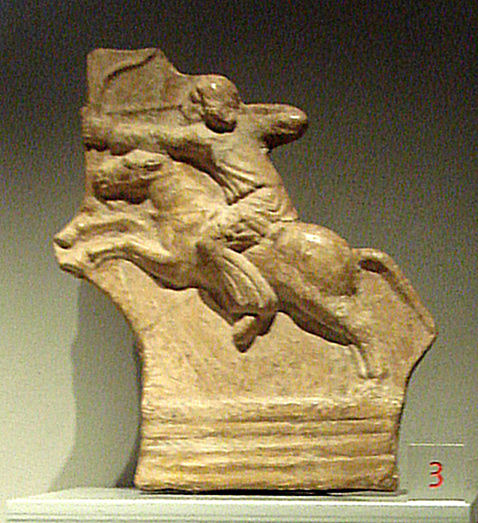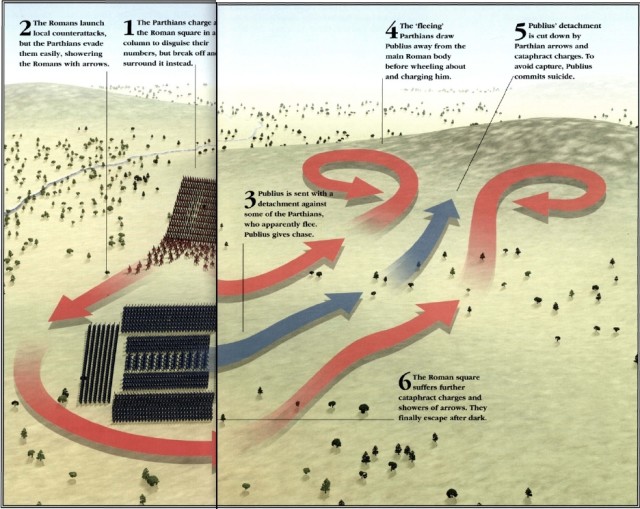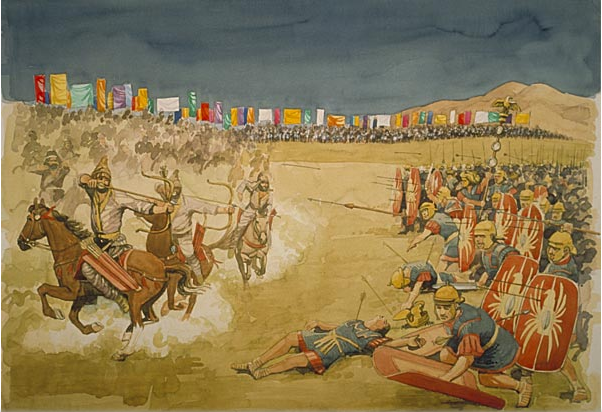In the middle of summer, 53 BCE the Roman Triumvir Crassus was severely defeated in his campaign into the lands of the Parthian Empire. His wish to add the territories captured from Alexander to the Roman Empire led him to a catastrophic end and marked the clash as one of the heaviest losses they ever suffered. It was also the first time a Roman legion had lost their Aquila, an event that brought shame, dishonor, and disgrace.
When the Romans made that attempt and attacked the Eastern Parthian Provinces, their army was smashed by the forces of the Persian general Surena. The event cost the lives of almost the entire Roman army, and whoever was not put to the sword was sold into slavery in the northern provinces of the Persian Empire.
The Beginning of the Campaign
In 54 BC, the Parthian Empire of Orodes II was a decentralized land of feudal lords, and easy prey for the Romans. So, Marcus Crassus took the offensive and decided to invade the Persian lands.
At the beginning of his campaign, Crassus was convinced of his superior tactical skills and declined to take advice on the road to take to enter the Parthian Empire. Although his ally, the Armenian King, told him to cross the mountain roads, Crassus were anxious to take a different way. In the Mesopotamian border towns, Roman legions were stationed, and he could not pass up the opportunity to incorporate them into his forces.
Later on, as he crossed the Euphrates river, he again chose not to follow the advice of his right hand, who insisted they should follow the river. Instead, he trusted the words of a local Arab leader, who was in possible alliance with Surena. The Arab leader, whose identity is still in doubt, led Crassus right into the desert, away from the river, and once they were close to Surena, he fled. The battle was imminent.

The Imperial Armies of Rome and Parthia
According to Plutarch, Crassus led seven legions, plus a considerable number of cavalry and light infantry, beyond the border. The 36,000 led by the Roman Triumvir were a force to be reckoned with, but as they would soon find out, their numbers would not be enough.
General Surena was an adept general of the Persian forces and a celebrated hero in his time. The great Persian commander led a significantly smaller army to repel the invading Romans. About 10,000 men were to defend Parthia.
Surena’s force was formed by as many as a thousand fully armored lancers – or ‘cataphracts’ – nine thousand horse-archers, and a thousand camels behind them, carrying stacks of arrows. His entire army was mounted and well adapted to the Mesopotamian terrains, which unfortunately for Crassus, couldn’t be said for his legions.
The Battle of Carrhae

Crassus, adapting to the usual square formation of the legions, advanced and further away from the river Balikh, in contrary to the advice of his officers. Hurrying his troops deeper into the sands, the Roman Triumvir soon met the advancing force of his enemy Surena.
Surena, spotting his enemy, personally led his mounted lancers in an attack. He pierced right into the Roman legions with the sun behind his armored men, blinding the enemy. The Romans still somehow managed to withstand the attack. Parthian arrows began raining down on the Romans.
Crassus, to cut down his losses, ordered his Gaulish cavalry and the infantry to mix and repel the Parthian mounted units and their attack. Nevertheless, the tactic proved insufficient and a late response. The pressing army of Surena was quickly routing the Roman forces. Crassus made yet another desperate attempt to repel and outflank the enemy. The Triumvir ordered his son to push into the rear of the Parthian army and break their line.
Publius, his son, leading some 22,000 of the Romans, following his father’s wish opened an attack from the rear, but this, too, proved ineffective, for he was quickly circled by the enemy cavalry and cut from the rest of the army. Disarrayed and defenseless, the cavalry, archers, and infantry under Publius were buried under a volley of Persian arrows.
Young Crassus’s forces were dropping down in numbers faster than he could react, and he started to withdraw from the battle with the legions under his command, trying to make a last stand on higher ground, hoping to survive. Not long after, Publius, seeing no chance of a victory and scared to fall in the hands of Persians, ordered his armor-bearer to end his life, thus dooming the remainder of his force of some few hundred men to become slaves.
At least this is what the rest of the army thought, seeing Persians victoriously weaving his head impaled on a spear.
The Unsuccessful Retreat
Crassus, with Cassius at his side, still commanded the main army. They continued to defend themselves against the harsh attack of the Parthians. For several hours, the Romans fought for their lives, until the fall of the night, when the Parthians seized their chance to attack, simply because it was too dark to shoot.
Under the cover of the darkness, whatever was left and able to move from the Roman garrisons, was mobilized by the remaining commanders and tried to flee. The thick darkness and unknown terrain were filled with the cries of the injured left behind. The darkness engulfed the legions, and it wasn’t long before they broke their line.
Some ended up in the city of Carrhae and warned the local Roman garrison commander Coponius of the great battle which took place not too far away, while other pieces of the army were found and massacred by the Iranians in the morning.
The next day Coponius organized his men and left the city in search of Crassus. Crassus, against any advice, had left the city and headed to Armenian lands, following the words of yet another suspicious guide. The Roman commander Cassius left the lands of the Parthian empire safely, led by true guides. Crassus’ fate was not so favorable.
His men were occupied in the mountain range and attacked by the Persian forces of Surena; the Roman commander Octavius descended from the heights of the mountains to support Crassus. However, Crassus was already persuaded by an offer from Surena to sign a peace treaty. Octavious, falsely suspected foul play and attacked. The Parthians answered with slaughter, and the Roman forces were massacred by the thousands. Crassus himself was killed by the Parthians, and one story tells that molten gold was poured down his throat. The disastrous Roman campaign of Carrhae ended as a bloodbath, and all who did not die at that last stand were captured and sold into slavery.
As a result, the Euphrates was established like a boundary between the Roman and Parthian empires. Although the Parthians won, they did not continue the conflict and did not invade Rome in return.
Bibliography:
- Dio, Cassius. Roman History: Book 40
- A.D.H. Bivar, “The Campaign of Carrhae,” in The Cambridge History of Iran
- The Parallel Lives by Plutarch published in Vol. III, Life of Crassus, of the Loeb Classical Library edition, 1916
